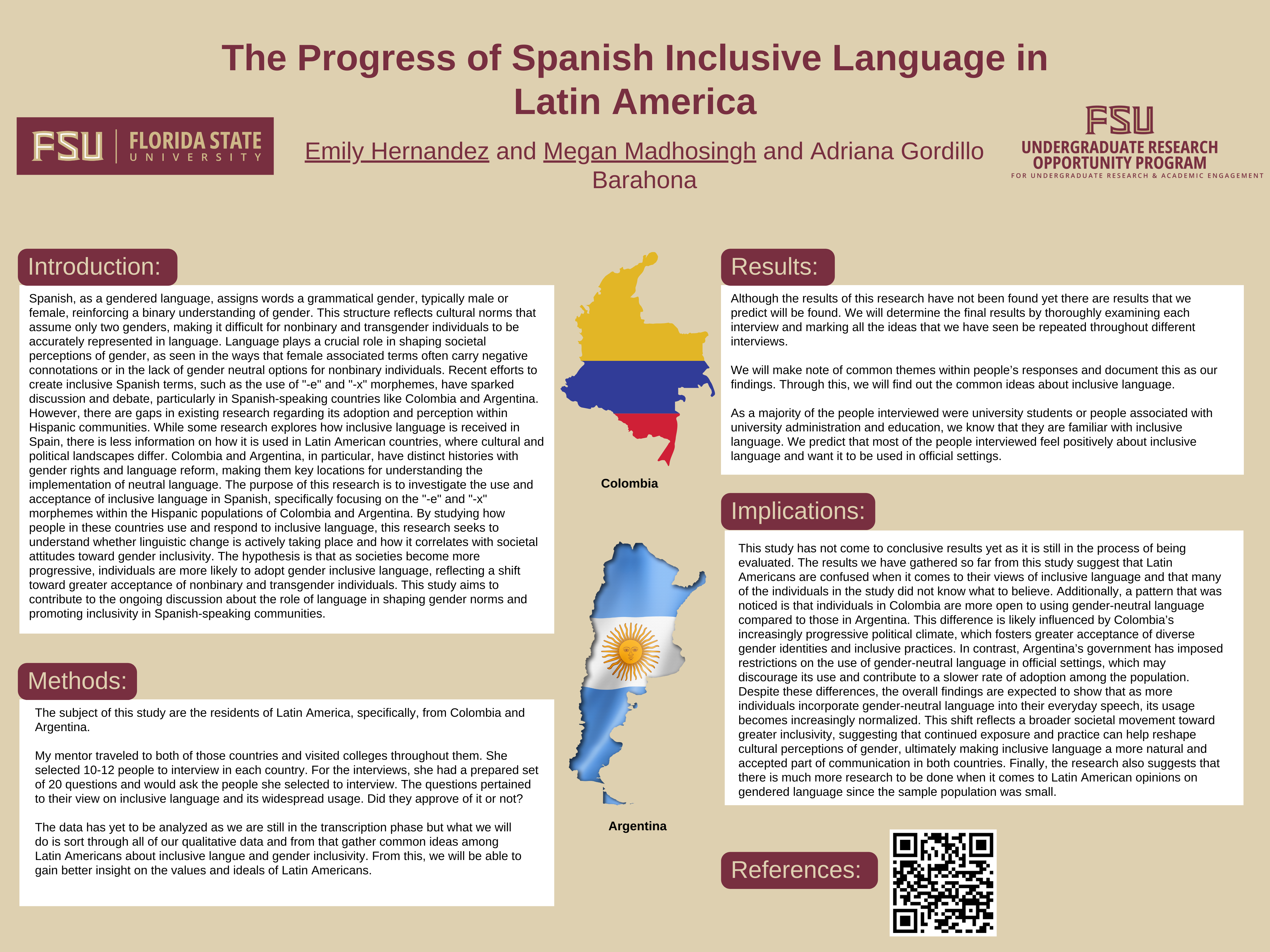Research Symposium
25th annual Undergraduate Research Symposium, April 1, 2025
Emily Hernandez Poster Session 4: 3:00 pm - 4:00 pm/ Poster #133

BIO
Emily Hernandez is a Finance major at Florida State University interested in pursuing a dual-degree in Political Science. She is from Miami, Florida and has plans to attend law school. She is the outreach coordinator for the Cuban American Student Association, a founding member of Kappa Alpha Pi fraternity on campus, and a legal translator for Voces Unidas: Multilingual Initiative for Farmworker and Immigrant Advocacy. Emily's research interests are gender-inclusive language, particularly in Latin America. During her free time, she likes to try new restaurants, read, and paint.
The Progress of Spanish Inclusive Language in Latin America
Authors: Emily Hernandez, Adriana Gordillo BarahonaStudent Major: Finance
Mentor: Adriana Gordillo Barahona
Mentor's Department: Modern Languages Mentor's College: College of Arts and Sciences Co-Presenters: Megan Madhosingh
Abstract
Spanish, as a gendered language, assigns words a grammatical gender, typically male or female, reinforcing a binary understanding of gender. This structure reflects cultural norms that assume only two genders, making it difficult for nonbinary and transgender individuals to be accurately represented in language. Language plays a crucial role in shaping societal perceptions of gender, as seen in the ways that female associated terms often carry negative connotations or in the lack of gender neutral options for nonbinary individuals. Recent efforts to create inclusive Spanish terms, such as the use of "-e" and "-x" morphemes, have sparked discussion and debate, particularly in Spanish-speaking countries like Colombia and Argentina. However, there are gaps in existing research regarding its adoption and perception within Hispanic communities. While some research explores how inclusive language is received in Spain, there is less information on how it is used in Latin American countries, where cultural and political landscapes differ. Colombia and Argentina, in particular, have distinct histories with gender rights and language reform, making them key locations for understanding the implementation of neutral language. The purpose of this research is to investigate the use and acceptance of inclusive language in Spanish, specifically focusing on the "-e" and "-x" morphemes within the Hispanic populations of Colombia and Argentina. By studying how people in these countries use and respond to inclusive language, this research seeks to understand whether linguistic change is actively taking place and how it correlates with societal attitudes toward gender inclusivity.
Keywords: Spanish, Gender, Inclusive


